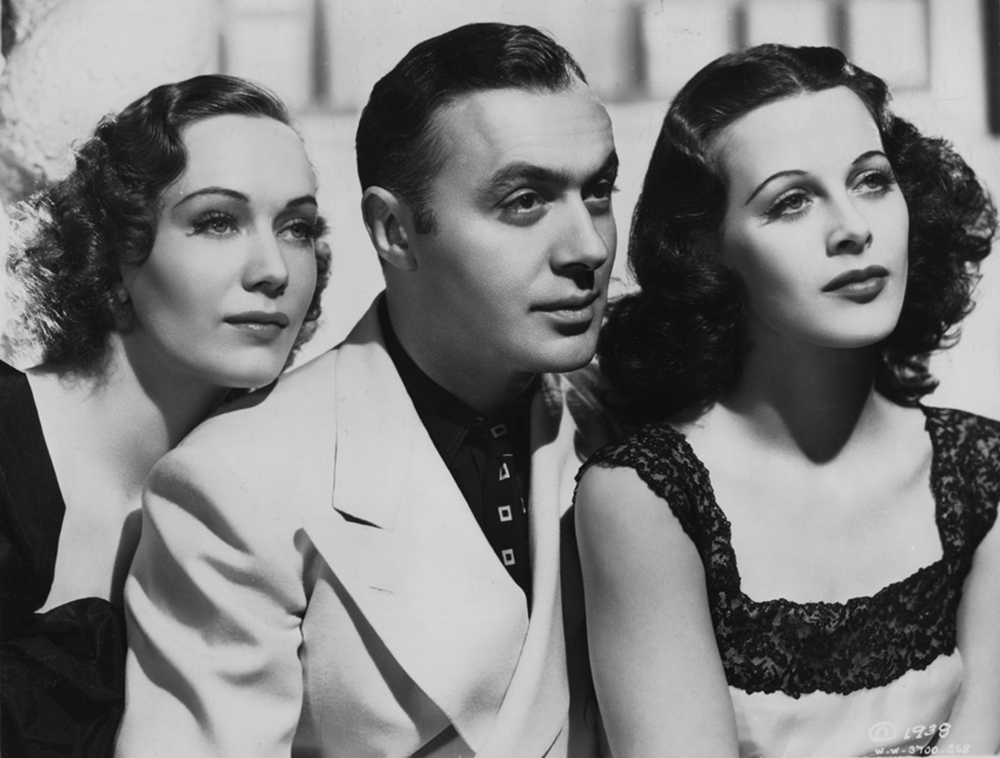French national treasure Jean Gabin, as jewel thief Pépé le Moko, looks like a dewy-eyed Spencer Tracy. He has the same plain, unadorned acting style, the rough-hewn brio, and nascent sensitivity of a working class hero. Unfortunately, Gabin’s incandescent masculinity, which seems so right for the character of Pépé, (who is trapped in the Casbah along with his gang, because it is the only place in Algeria where the police have no power), is dimmed by the stodgy pace of the script and the pedestrian camerawork.
“Pépé le Moko” is more interesting as a cultural artifact of French colonialism and entrenched misogyny that as an exotic mob movie. It hard to decide whether the unquestioned French dominion in Algeria is more annoying than the stereotypical portrayal of women as exquisite objects of desire or as jealous, scheming shrews. Either way this story of a man who chooses a beautiful stranger because she reminds him of his beloved Paris over his Algerian mistress, who embodies his imprisonment in the Casbah, is not sufficiently developed to support its run at the archetypal doomed hero.
But in 1937, when the French were still well ensconced in their colonial possessions before the cataclysm of World War II pried their fingers loose from Algeria—and when women were barely considered people—“Pépé le Moko” was a huge hit in Europe. Inevitably it was remade in Hollywood in English the following year retitled as “Algiers.”
Consequently, in my opinion, things get marginally better because Charles Boyer and Hedy Lamarr were cast as the thief and his Parisian lover. Where things do not get better is the jaw-dropping fact that “Algiers” is almost a shot-for-shot remake of “Pépé le Moko.” All the actors cast in the American film are doppelgangers of their French counterparts. In fact, director John Cromwell forced the actors to watch and imitate “Pépé le Moko” scene by scene.

Is there anything that makes “Algiers” worth watching? Yes— a) because this is the film debut of Hedy Lamarr, not only one of the most beautiful faces on the Hollywood screen, but also the inventor of signal hopping, the basis of all wireless communication; b) because Charles Boyer does what he did best—romance a woman with his creamy French accent and shoot sparks of passion from his dreamy eyes, and c) because “Algiers” was so successful it became a cultural touchstone. Boyer’s “Pépé le Moko” inspired Warner Bros.’ cartoon skunk Pepé le Pew. And the phrase murmured in a dulcet French accent, “Let me take you to ze Casbah” became the byword in seduction, though Boyer never said it.
Be warned that “Pépé le Moko” and “Algiers” are rife with old time stereotypes. For me, Charles Boyer was worth watching “Algiers.” But if you want to watch something else: a documentary about Hedy Lamarr, “Bombshell: The Hedy Lamarr Story” (2017), and a film about revolution in Algiers, “The Battle For Algiers” (1966) are also good bets.